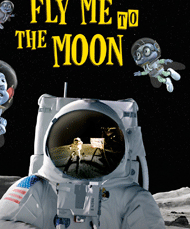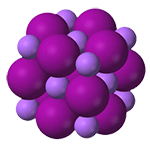Potassium Citrate More




Citrate Therapy for Polycystic Kidney Disease in Rats
Nephron Physiol. 2003 Jan;93(1):P14-20.
Tanner GA, Tanner JA.
Potassium Citrate/Citric Acid Intake Improves Renal Functioning in PKD Models
 Progression of autosomal-dominant polycystic kidney disease (ADPKD) in the heterozygous male Han:SPRD rat is
dramatically slowed by ingestion of potassium or sodium citrate.
Progression of autosomal-dominant polycystic kidney disease (ADPKD) in the heterozygous male Han:SPRD rat is
dramatically slowed by ingestion of potassium or sodium citrate.
Dietary Treatment of PKD in Rats
These Alkaline PKD researchers have given us conclusive scientific evidence showing that in the PKD model, those fed an alkalizer [potassium citrate] not only lived almost twice as long lives, but the PKD model on the alkaline diet, did not go on to kidney failure and their cystic kidneys never enlarged to typically huge PKD polycystic kidneys. Whereas their counterparts NOT fed potassium citrate died at 10 months, developed kidney failure; and did develop huge polycystic kidneys. This lecture was given to a standing room only backed up all the way down the hallway with eager PKD'rs at a PKD conference. This was the first time we had ever seen such a turn out for such an outstanding standing room only PKD lecture.
We are grateful to have available to us, the detailed potassium citrate clinical research undertaken by these dedicated scientists - Judy Tanner and George Tanner. It is through their work that we with PKD have come to learn the benefits of remaining alkaline. The Tanners performed some very precise detailed experiments that led to the discovery that potassium alone helped PKD and citrate alone helped PKD, but by far and away the most benefit was obtained from alkalinity.
Before beginning citrate salts check urinary citrate levels. This should be low as is to be expected with PKD. Get baseline electrolytes with base excess, and a urinary pH. Start the potassium citrate, sodium citrate, calcium citrate or magnesium citrate. Every other day initially get serum potassium x 3 days. Then get checked once a week, then once a month for two months, then once a quarter for two quarters, then once every 6 months, then once a year. Familiarize yourself with the symptoms of high and low serum potassium.
Citrate is utilized by the kidneys as energy. Sodium citrate and potassium citrate were equally effective alkalizers. Calcium citrate was less so. In the normal progression of PKD towards end stage renal disease, potassium rises. Many doctors oftentimes prescribe a favorite old standby, sodium bicarb, as an inexpensive alkalizer. However due to the inherent nature of PKD, this will lead to an increase in kidney stone formation, especially for PKD'rs. We already have a 20% increased risk of developing kidney stones. Taking sodium bicarbonate multiplies this risk. Ask your nephrologist if sodium citrate might prove beneficial for you. Not only is potassium citrate or alkalinity beneficial for PKD, there are some clinical trials that show it also helps lower blood pressure and improve bone density and diminish recurrent kidney stone formation.
Empirical Knowledge is Knowledge Grasped from Within
I liken Potassium Citrate PKD Researchers, Judy and George Tanner to a young Galileo trying to refute a thousand year old theory first established by a Greek named Aristotle. We with cystic organs know that something is true, because we have experienced it. It is true at least for ourself alone within a private set of circumstances within our own particular body. We are akin to the ancient Romans, the Italians, wishing to conduct a practical clinical trial to see if an experiment might prove the likelihood of potassium or sodium citrate working to diminish symptoms in humans with PKD. If it does not work, then we wish to know why it will not work.

Perhaps a few nephrologists are having leanings toward prescribing potassium citrate for PKD'rs much like the famous leaning tower. Galileo is said to have dropped a bag of feathers and a ball simultaneously from the top of the leaning tower of Pisa. This was the beginning of the science of free fall acceleration. Galileo Galilei was condemned for his theories by his church for promoting a Copernican cosmology. Aristotle's theory proclaimed that the heavier object would fall and hit the ground at a much faster rate. In 1992 scientists at the University of Pisa confirmed the correctness of Galileo's theory. Even today Galileo is still capable of provoking controversy. Read about Pope Benedict XVI canceling his planned visit to a prestigious Italian university after a protest by academics and students attacked his views on Galileo. Galileo was born in 1564, the same year as Shakespeare and the year in which Michelangelo and Calvin died. Benedetti Giambattista had already published a comparable experiment in 1553. Another similar test had been completed by the Flemish engineer Simon Stevin in 1586.
Fly Me to the Moon

Commander David R Scott (2 August 1971, lunar surface).
"Well, in my left hand I have a feather; in my right hand, a hammer. And I guess one of the reasons we got here today
was because of a gentleman named Galileo, a long time ago, who made a rather significant discovery about falling objects
in gravity fields. And we thought: 'Where would be a better place to confirm his findings than on the Moon?"
[Camera zooms in on Scott's hands. One is holding a feather, the other a hammer. The camera pulls back to show the Falcon the Apollo 15 landing craft and the lunar horizon.] "We thought we'd try it here for you. The feather happens to be, appropriately, a falcon feather for our Falcon. And I'll drop the two of them here and, hopefully, they'll hit the ground at the same time." [Scott releases hammer and feather. They hit the ground at about the same time.]
"How about that! Mr. Galileo was correct in his findings."
The truth that objects of different masses fall at the same rate inside a vacuum, is associated with a single person (Galileo) and a single place, the Leaning Tower of Pisa. The culprit who has told the world about this is said to be Vincenzio Viviani, Galileo's secretary who wrote in the final years of Galileo's life.
Potassium Citrate has been used by NASA to prevent bone loss experienced during space travel.
